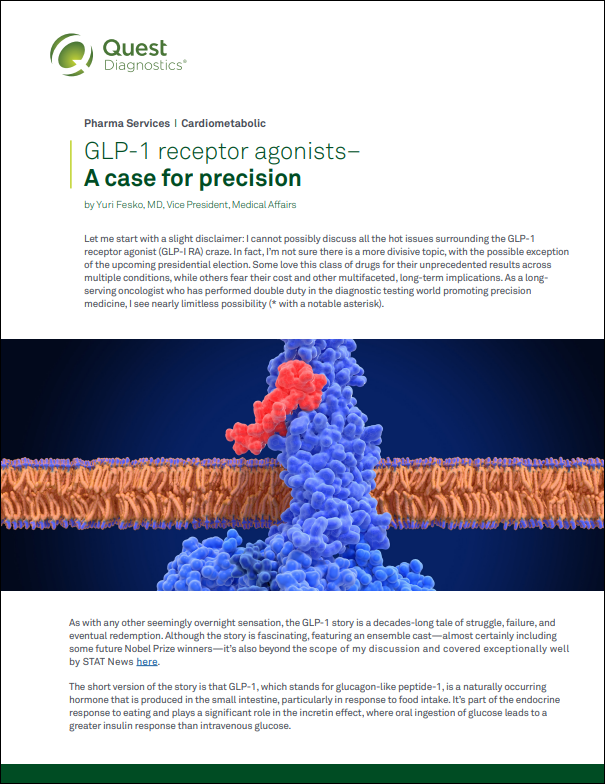
GLP-1 receptor agonists–A case for precision

GLP-1, stands for glucagon-like peptide-1, is a naturally occurring hormone that is produced in the small intestine, particularly in response to food intake. It’s part of the endocrine response to eating and plays a significant role in the incretin effect, where oral ingestion of glucose leads to a greater insulin response than intravenous glucose.
GLP-1 has several key actions that help regulate blood glucose levels:
- It stimulates the pancreas to produce insulin in a glucose-dependent manner, meaning that it helps the body to secrete insulin when blood glucose levels are high
- It inhibits the secretion of glucagon, a hormone that increases blood sugar levels
- It slows gastric emptying, which leads to a more gradual absorption of glucose into the bloodstream
- It promotes a feeling of satiety or fullness, which can help reduce food intake
Download this report to discover how engineered GLP-1 agonists are transforming blood glucose regulation and weight management by overcoming the limitations of the natural hormone.
